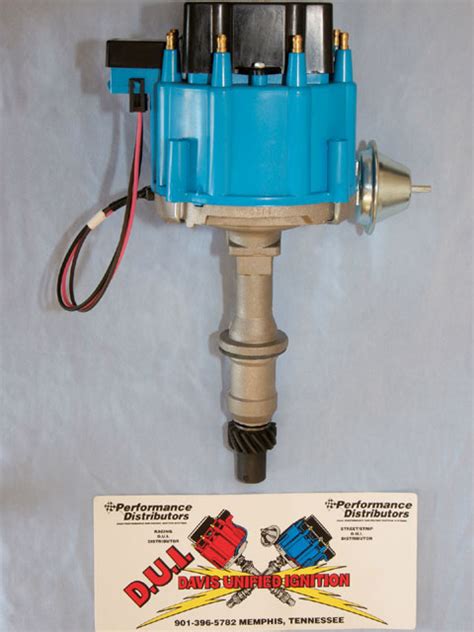HEI Distributor: Achieve Optimal Ignition Timing for Peak Performance
The High-Energy Ignition (HEI) distributor revolutionized automotive ignition systems, offering significant improvements over older point-and-condenser systems. Understanding how to achieve optimal ignition timing with your HEI distributor is crucial for maximizing engine performance, fuel efficiency, and longevity. This comprehensive guide will delve into the intricacies of HEI distributors, explaining how to ensure your engine is firing at precisely the right moment for peak efficiency.
What is an HEI Distributor?
The HEI distributor is an electronic ignition system that replaced the less reliable point-and-condenser systems in many vehicles. It features a built-in electronic control module, eliminating the need for external components like ballast resistors and coil ignition modules. This integrated design provides several advantages, including:
- Increased Spark Energy: The HEI system generates a much stronger spark, leading to improved combustion and reduced misfires.
- Enhanced Reliability: The elimination of points and condenser reduces wear and tear, resulting in a more reliable ignition system.
- Simplified Maintenance: With fewer moving parts, the HEI distributor requires less maintenance than its predecessors.
- Improved Fuel Efficiency: The stronger spark leads to more complete combustion, resulting in better fuel economy.
How Does an HEI Distributor Work?
The HEI distributor uses a magnetic pickup to sense the crankshaft's rotational position. This signal is then sent to the control module, which triggers the coil to fire at the precisely calculated time. The distributor rotor then directs the high-voltage spark to the appropriate spark plug wire. This precise timing is critical for efficient engine operation.
What are the Key Components of an HEI Distributor?
- Control Module: The brain of the system, controlling spark timing and coil firing.
- Magnetic Pickup: Senses crankshaft rotation to determine engine speed and position.
- Rotor: Distributes the high-voltage spark to the correct spark plug wire.
- Distributor Cap: Houses the rotor and terminals for the spark plug wires.
- Coil: Generates the high-voltage spark.
Achieving Optimal Ignition Timing: A Step-by-Step Guide
Correct ignition timing is paramount for optimal performance. Improper timing can lead to reduced power, poor fuel economy, engine damage, and excessive emissions. Here's how to achieve optimal timing:
1. Understanding the Basics of Ignition Timing
Ignition timing refers to the precise moment the spark plug fires in relation to the piston's position. It's measured in degrees before top dead center (BTDC). The optimal timing varies depending on the engine's design, load, and RPM.
2. Using a Timing Light
A timing light is essential for accurately setting the ignition timing. This tool flashes in sync with the spark, allowing you to visually determine the timing mark's position on the crankshaft pulley.
3. Locating the Timing Marks
Consult your vehicle's service manual to locate the timing marks on the crankshaft pulley and the timing pointer on the engine block.
4. Setting the Initial Timing
With the engine running at idle, use the timing light to align the timing mark with the pointer. Adjust the distributor's position to achieve the specified initial timing (typically found in your vehicle's service manual).
5. Adjusting Timing for Different Conditions
The optimal timing can vary with engine speed and load. Some HEI distributors offer mechanical or vacuum advance mechanisms to automatically adjust timing based on these conditions.
6. Troubleshooting Ignition Timing Issues
If your engine exhibits symptoms like poor performance, rough running, or hard starting, improper ignition timing could be the culprit. Check for issues such as worn distributor components, vacuum leaks, or incorrect timing settings.
Frequently Asked Questions (FAQs)
How often should I replace my HEI distributor?
The lifespan of an HEI distributor varies greatly depending on usage and maintenance. While they are generally quite durable, regular inspections and preventative maintenance can extend their life significantly. Look for signs of wear, such as cracks in the distributor cap or corrosion on the terminals.
Can I adjust the timing myself?
While adjusting the timing is a relatively straightforward process, it requires some mechanical knowledge and the use of specialized tools. If you're not comfortable working on your engine, it's best to have a qualified mechanic perform the adjustment.
What happens if my ignition timing is off?
Incorrect ignition timing can lead to a variety of problems, including reduced power, poor fuel economy, engine damage, increased emissions, and difficult starting.
Can I upgrade my HEI distributor?
Several aftermarket HEI distributors offer improved performance features, such as adjustable timing curves and enhanced spark energy. These upgrades can significantly improve engine performance.
By following this guide and understanding the nuances of your HEI distributor, you can ensure optimal ignition timing, leading to a more powerful, efficient, and reliable engine. Remember to consult your vehicle's service manual for specific specifications and recommendations.

